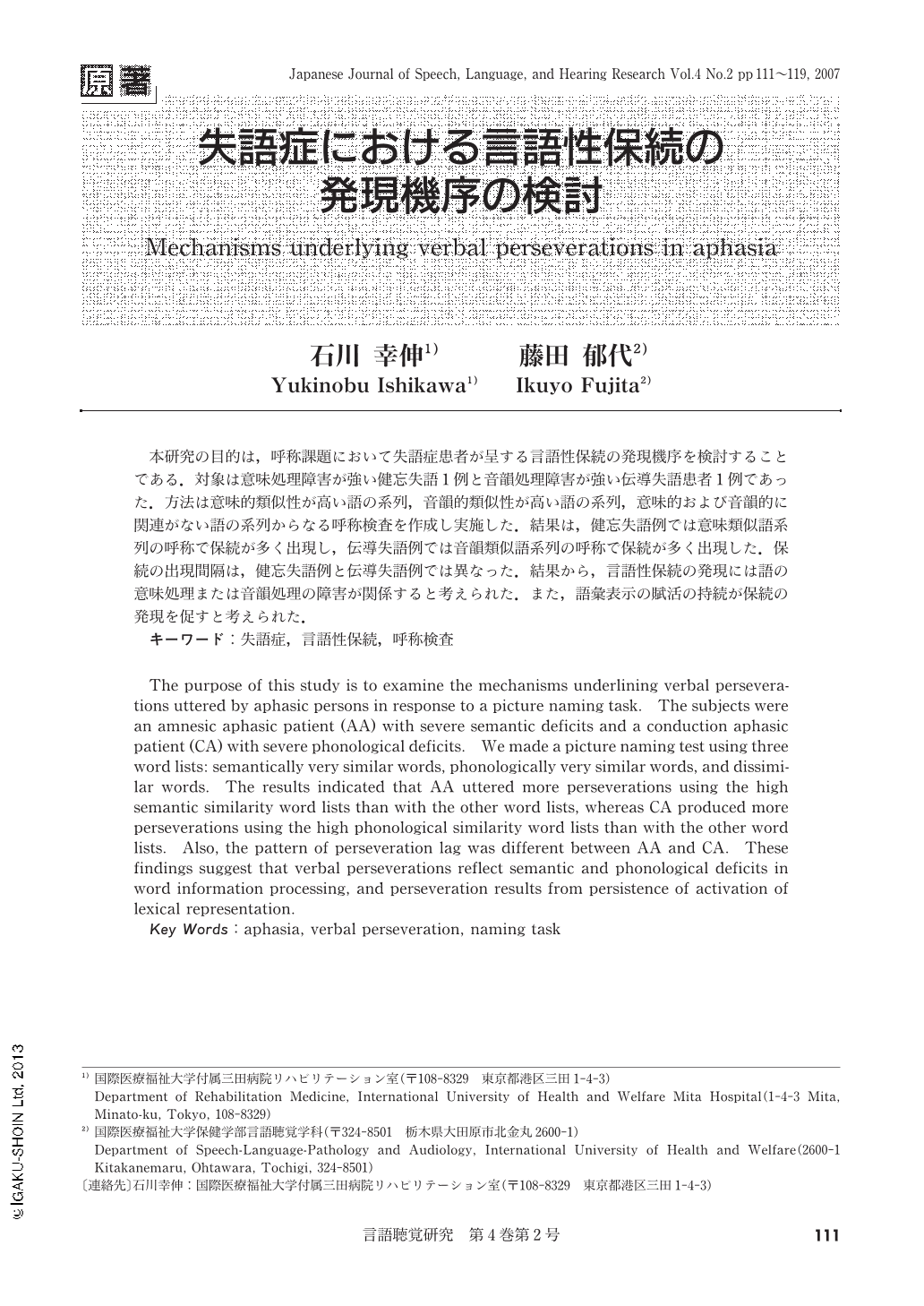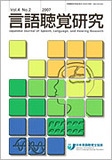Japanese
English
- 有料閲覧
- Abstract 文献概要
- 1ページ目 Look Inside
- 参考文献 Reference
本研究の目的は,呼称課題において失語症患者が呈する言語性保続の発現機序を検討することである.対象は意味処理障害が強い健忘失語1例と音韻処理障害が強い伝導失語患者1例であった.方法は意味的類似性が高い語の系列,音韻的類似性が高い語の系列,意味的および音韻的に関連がない語の系列からなる呼称検査を作成し実施した.結果は,健忘失語例では意味類似語系列の呼称で保続が多く出現し,伝導失語例では音韻類似語系列の呼称で保続が多く出現した.保続の出現間隔は,健忘失語例と伝導失語例では異なった.結果から,言語性保続の発現には語の意味処理または音韻処理の障害が関係すると考えられた.また,語彙表示の賦活の持続が保続の発現を促すと考えられた.
The purpose of this study is to examine the mechanisms underlining verbal perseverations uttered by aphasic persons in response to a picture naming task. The subjects were an amnesic aphasic patient (AA) with severe semantic deficits and a conduction aphasic patient (CA) with severe phonological deficits. We made a picture naming test using three word lists: semantically very similar words, phonologically very similar words, and dissimilar words. The results indicated that AA uttered more perseverations using the high semantic similarity word lists than with the other word lists, whereas CA produced more perseverations using the high phonological similarity word lists than with the other word lists. Also, the pattern of perseveration lag was different between AA and CA. These findings suggest that verbal perseverations reflect semantic and phonological deficits in word information processing, and perseveration results from persistence of activation of lexical representation.

Copyright © 2007, Japanese Association of Speech-Language-Hearing Therapists. All rights reserved.


